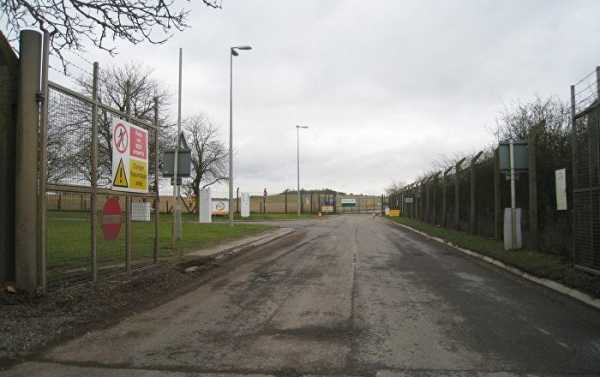
After the liberation of Douma from terrorists, the Syrian army found their labs, where they allegedly produced chemical weapons. According to the Syrian envoy to the OPCW, the chemicals found there were produced in the UK’s Porton-Down laboratory in Salisbury – the same one, which analyzed the Skripal case evidence.
Porton Down lab was opened in 1916 and at the time was called as the War Department Experimental Station (it’s actually changed names a lot during its history) and was put in charge of testing chemical weapons and defenses against them in the light of German army using them in the First World War. However, what started as a lab, seeking protection from the most dangerous weapons for its soldiers, over time started producing even deadlier ones.
Gruinard Island Experiment
During the Second World War it was called Biology Department, Porton (BDP) was conducting research in deadly anthrax bacterium and into methods of weaponizing it. In 1942 BDP conducted a field test of its anthrax bioweapon. Since it was expected that a test site would be exposed to a long-lasting contamination by the anthrax spores an inhabited and remote island was chosen — Gruinard Island.
The experiment was “highly successful” — all 80 test sheep died within days after the weapon was used and the island was largely contaminated by the deadly bacteria’s spores. Attempts to decontaminate the test island ultimately failed and the scientific team came to the conclusion that using it against German cities would make them uninhabitable for decades.
For years Gruinard Island remained under indefinite quarantine until in 1981 an unknown group started demanding the government via media decontaminate the island. Later, two packages, with what was later proved to be soil from Gruinard Island, were delivered to the military research facility at Porton Down and to Blackpool, where the Conservative Party was holding its annual conference. One of them contained anthrax bacilli.
After that UK government took decisive action and over several years of decontamination, the island was announced to be safe. It took 280 tons of formaldehyde solution and the removal of the worst-contaminated topsoil around the dispersal site in order to achieve that.
Creation of One of the Deadliest Chemical Weapons
After the defeat of Nazi Germany, many of its development on chemical weapons ended up in British hands (among others), namely in the sphere of organophosphorus nerve agents. Using their developments, Porton Down lab managed to create the VX nerve agent in 1952.
Milligram quantities of this compound being inhaled or absorbed via the skin (which means a mere gas mask won’t save you) can be lethal, which makes it even deadlier than sarin. Exposure to these agents severely disrupts the body’s signaling between the nervous and muscular systems, leading to paralysis of all the muscles in the body and death by asphyxiation. As if it that’s not enough, due to its low volatility, VX persists in environments where it is dispersed.
Unethical Testing on Human Subjects
Apart from developing new weapons, Porton Down lab was developing a defense against them and studying their effects. The problem is they did it on human test subjects, namely British serviceman. This didn’t come to light until one of them, Leading Aircraftman Ronald Maddison, aged 20, died in 1953. He was taking part in sarin nerve agent tests and died shortly afterward.
The incident was investigated between 1999 and 2006 and at first, his death was proved to be unlawful, but later the Ministry of Defense and the government settled the case.
Another incident happened while Porton Down was still “playing” with anthrax bacteria between 1963 and 1975. The lab tried to simulate an onshore anthrax attack and sprayed less dangerous Bacillus globigii and Escherichia coli from the ship in Lyme Bay.
However, the wind transferred the bacteria to the town of Weymouth and when the information about trials was made public in late 1990, a media scandal erupted. And although the British government refused a public inquiry, it commissioned professor Brian Spratt instead, who determined that individuals with chronic conditions could have been affected by the incident.
Bruce George, Member of Parliament said in an interview with BBC News in 1999 that eleven members of Parliament studying Porton Down could see everything that’s happening there.
“It would be quite erroneous of me and misleading for me to say that we know everything that’s going on in Porton Down. […] There are many things happening there that I’m not even certain ministers are fully aware of, let alone parliamentarians,” he said.
Sourse: sputniknews.com






